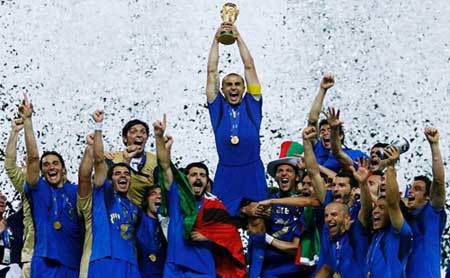世界杯游客,准备好迎接巴西高物价!

|
Unlike nearby Latin American nations where a tourist's U.S. dollar or European Union euro seemingly stretches forever, Brazil is astoundingly expensive. If one's budget isn't immediately busted by the flight or the hotel, it will soon be done in by the $10 caipirinha cocktail, the $17 cheeseburger or the $35 pepperoni pizza. And those are the prices city-dwelling Brazilians saw even before the World Cup set off a new standard of sticker shock. ''Prices in Rio are absurd,'' Maria Anda, a Norwegian artist who has lived in Brazil for a year, said while enjoying the sunset on Ipanema beach. ''I still like it. It's worth being here, but it's not paradise.'' The dizzying prices are referred to here as the ''Custo Brasil,'' or ''Brazil Cost'' - the mixture of high taxes and steep import tariffs, combined with bad infrastructure, a dose of inefficiency and a thick shot of bureaucracy. Demand leading up to a big event like the World Cup naturally raises prices. But, since costs already were high to begin with, tourists should prepare to dig deep into their wallets and not be too miffed to receive goods or services of inferior quality, said Rafael Alcadipani, a business administration professor at the Getulio Vargas Foundation, Brazil's top think tank. ''Anything you buy in Brazil will be more expensive than in the United States or Europe, but the quality is going to be worse,'' Alcadipani said. Hotel rates in many of the World Cup host cities more than doubled ahead of the tournament. Massachusetts-based TripAdvisor reports visitors to Rio will face the highest prices, with hotel rates averaging $445 per night. Add in food and other expenses, and Rio travelers should prepare to spend $682 each day. Next costliest are Fortaleza and Manaus, where average daily expenses are estimated at $602 and $554, respectively. Even the more affordable host cities will set travelers back a good amount: $457 per day in Cuiaba and $477 in Sao Paulo. ''The Cup prices are ridiculous. Everything shot up. The only thing you can buy in Brazil is a bikini, a cachaca (Brazilian sugar cane liquor) and a pair of Havaianas (sandals),'' said Gillian Santos, a Brazilian who now lives in Belgium and was back in Rio on a recent visit. ''How do people afford things around here? As a Brazilian living abroad, I think it's outrageous.'' Experts say prices are kept high because supply can't keep up with demand. About 40 million Brazilians - a fifth of the population - joined the middle class in the past decade, on the back of strong economic growth and increased government social programs. Between 2009 and 2012, average annual income rose by more than 40 percent, from $8,140 to $11,630, according to the World Bank. For many, the new affluence sparked a spending spree. Brazil tries to protect its local industries by charging high tariffs on virtually all imported goods. For travelers who lose or forget an item, they might decide to do without rather than pay local prices. Take iPhones: The 5s that costs $199 in the U.S. has a starting price of $1,250 on Apple's Brazilian website. Need a pair of running shoes? A pair of the popular Nike Flyknit Lunar 2 runs about $313 at a Rio shopping mall - nearly triple the U.S. price. The examples go on. Levi 501 jeans start at $80. The $6.28 Big Mac is among the most expensive in the world. Shaving cream, soap, tissues, aspirin - all are double to triple the prices found elsewhere. ''Everything is expensive,'' said Nadir Fraguas, a retired bank employee who was at a Rio mall pondering whether to spend the equivalent of more than $100 on a Brazil national team jersey for her grandson. ''Clothing, cars and food... Here, you pay a lot and you get very little. Prices were already high, but now they're impossible.'' |
世界杯游客,欢迎来到足球之国——巴西,这里阳光明媚,漫天高价。 游客用美元或欧元就可以在拉丁美洲的许多国家买到诸多廉价商品,但巴西则不尽然,它的物价高得出奇。 如果你没有立即因航班或住宿超支的话,很快你就会因10美元的凯匹林纳鸡尾酒,17美元的吉士汉堡包或35美元的意大利辣香肠披萨而透支。这些就是巴西城市居民在世界杯之前看到的物价,世界杯开始后又会有新一轮的惊人标价。 “里约热内卢的物价十分荒谬。”挪威的艺术家玛丽·亚安达(Maria Anda)边欣赏伊帕内玛海滩的落日边说道。她已在巴西生活了一年。“我仍喜欢这里。住在这里很值得,但是这里并不是天堂。” 这些令人眼花缭乱的价格被称为“巴西成本”,是由高税收,高进口关税,糟糕的基础设施,低下的办事效率和浓厚的官僚主义所造成的。 巴西智囊团瓦加斯基金会的企业管理教授拉斐尔·阿卡迪帕尼(Rafael Alcadipani)说,像世界杯这类大事件会扩大需求,自然也会使物价上涨。但是,之前物价就高居不下,因而游客应准备更多的资金,并且不要因买到劣质的商品或得到差劲的服务就暴跳如雷。 “你在巴西购买的任何东西,其价格都会比在美国或欧洲更贵,但是质量却更差。”阿卡迪帕尼说道。 许多世界杯举办城市的房价都比之前锦标赛的时候贵两倍多。位于马萨诸塞州的到到网声称去里约热内卢的游客将会面临最高的房价,平均每晚要花费445美元。加上食物和其他的花费,去里约热内卢的游客要准备好每天花费682美元。 紧接在花费最高的城市之后的是福塔雷萨和玛瑙斯,这两个城市预计每天要平均花费602美元和554美元。即便是一些花费更为便宜的举办城市,如库亚巴和圣保罗,游客每天也需花费457美元和477美元。 “世界杯时期的物价十分荒谬。一路飙升。你在巴西买得起的物品就是一件比基尼,.一瓶巴西朗姆酒(巴西的甘蔗酒精)和一双人字拖鞋。”巴西人吉莉安·桑托斯说道。她现在住在比利时,最近返回里约热内卢。“人们怎么能够买得起这儿的东西?作为一名住在国外的巴西人,我认为这太离谱了。” 专家说物价高居不下是因为供不应求。巴西五分之一的人口也就是4千万的巴西人在十年内成为了中产阶级,他们促进了经济的强劲增长,增加了政府的社会项目建设。据世界银行统计,2009年至2012年期间,他们的平均年收入增长了40%,从8140美元增加到11630美元。对于许多人而言,新增的财富点燃了他们的消费热潮。 巴西为了保护地方工业,向几乎所有的进口商品收取高额关税。那些丢了或忘记携带某件物品的游客,可能会就此作罢,不会在当地进行购买。 举苹果手机的例子来加以说明:5s在美国售价199美元,而在巴西苹果的官网上,起步价是1250美元。需要一双运动鞋吗?一双流行的耐克Flyknit Lunar 2 runs系列的跑鞋在里约热内卢商场的售价约是313美元,几乎是美国售价的三倍。 再举些例子。李维斯501系列的牛仔裤起步价是80美元。麦当劳巨无霸全球最贵,售价6.28美元。剃须膏,肥皂,阿司匹林这些物品的价格是其他地区的两部至三倍。 “一切都很贵。”退休银行职员那迪尓·弗拉瓦斯说道。她曾在里约热内卢的商场考虑是否要花100多美元为她的孙子购买一件巴西国家队的运动衫。“衣服,汽车和食物……在这里,你花得多但得的少。过去物价一直很高,但是现在过犹不及。” (译者 唐巧芳 编辑 齐磊) |
Australia had a bumpy ride through the Asian qualifying groups, losing to Oman and Jordan, En route to finishing second behind Japan to seal a world cup place. >详细>>



